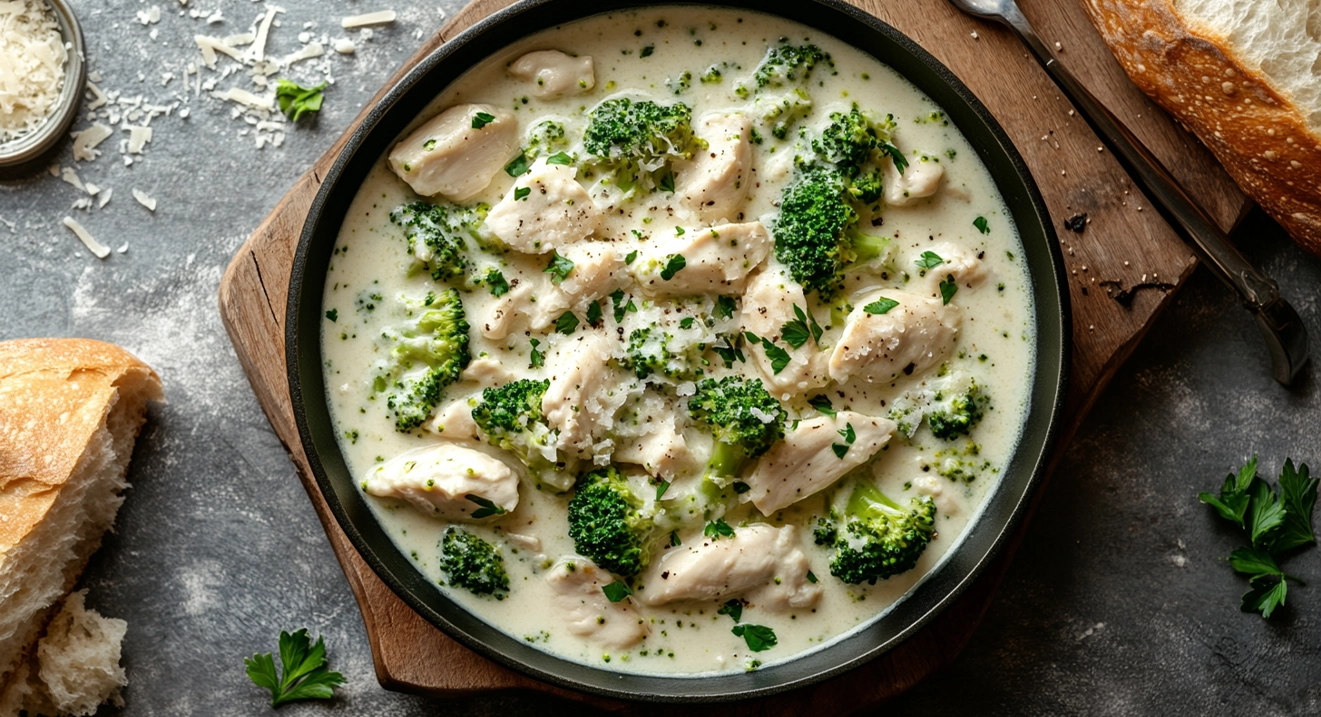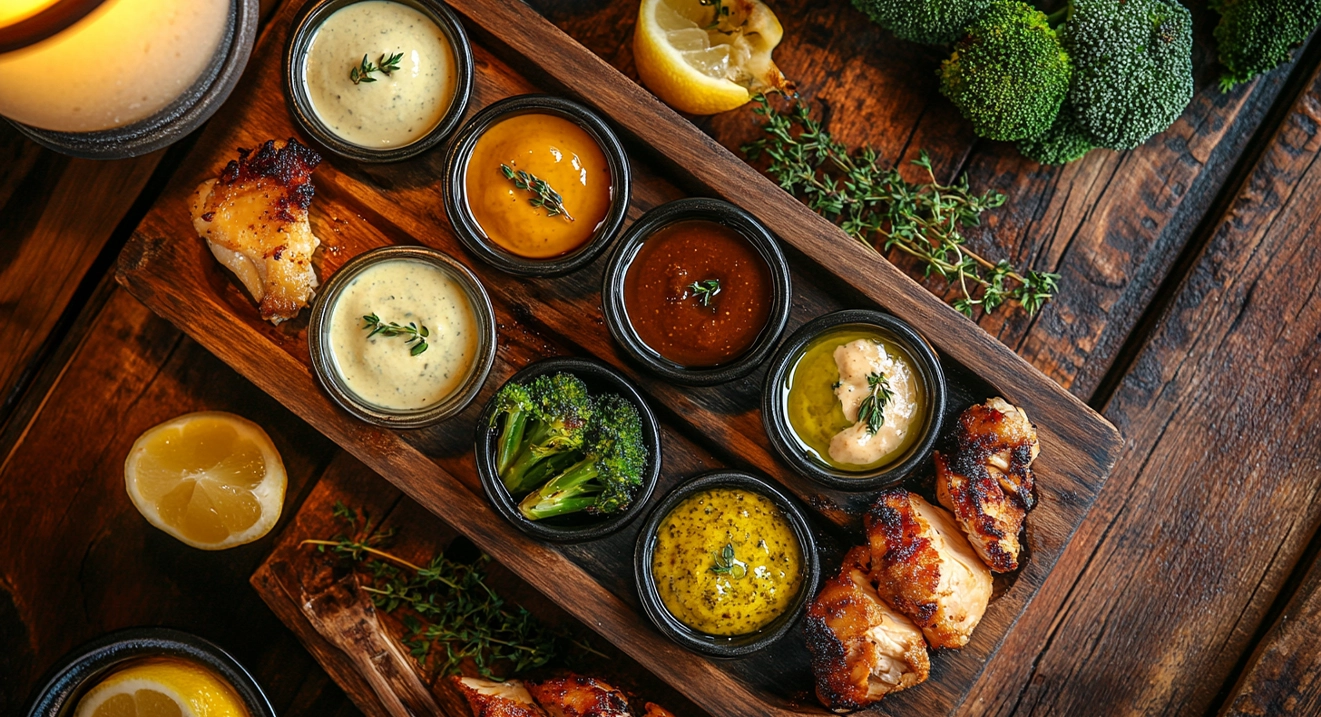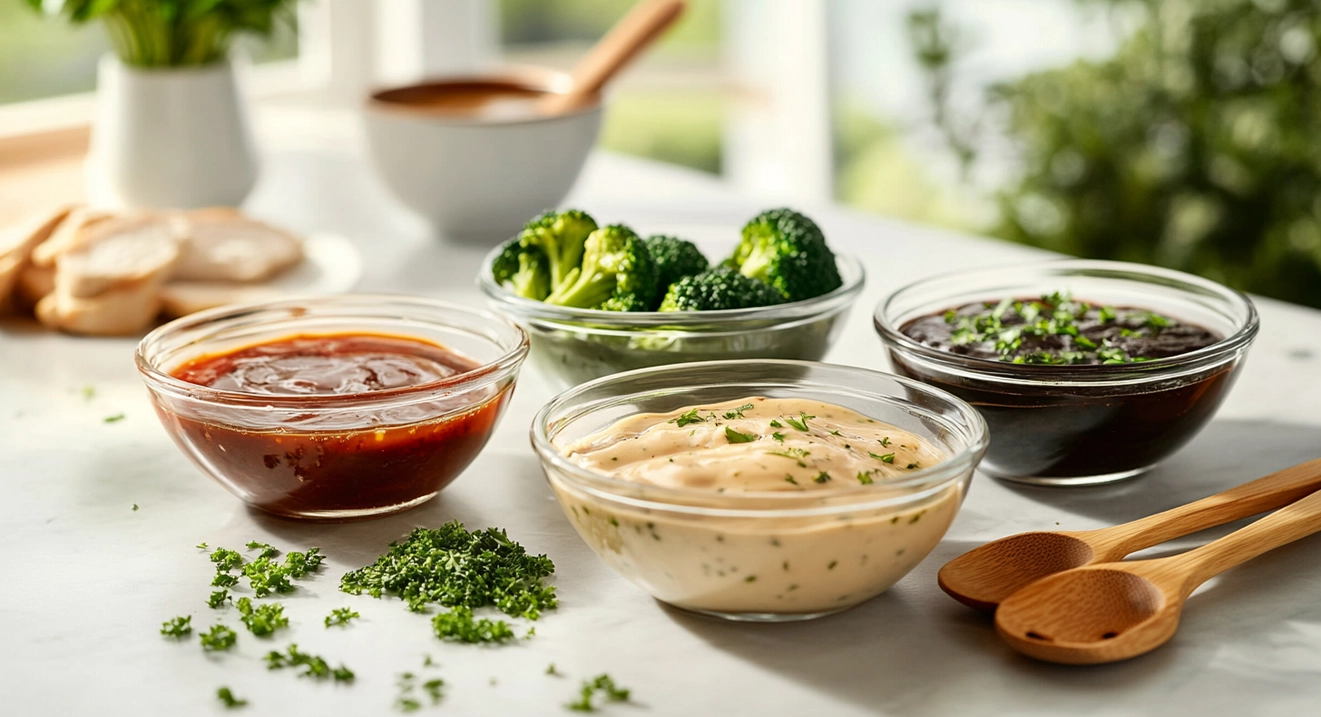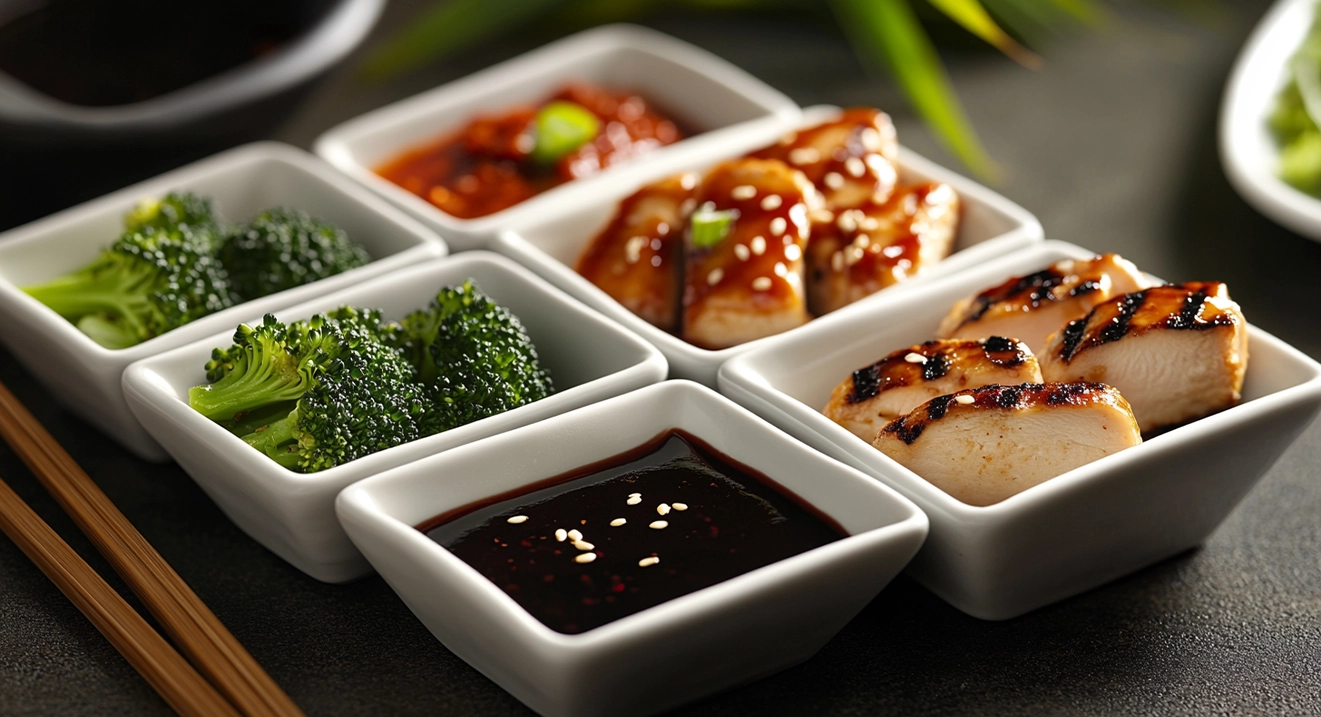Easy Chicken and Broccoli Sauce Recipe – A Delicious and Healthy Meal

Introduction to Chicken and Broccoli Sauce
What Makes It a Popular Dish?
Chicken and broccoli in a savory sauce is a beloved dish for many reasons. Its popularity lies in its simplicity, versatility, and nutritional balance. The tender chicken provides a lean source of protein, while broccoli adds fiber, vitamins, and a delightful crunch. Often a creamy, garlic-infused, or soy-based mixture, the sauce ties the flavors together, creating a comforting and satisfying meal.
This dish is also favored for its adaptability. It can be served over rice, noodles, or even quinoa, making it suitable for various dietary preferences. The dish can be easily customized to suit individual tastes, whether you prefer it spicy, tangy, or mild. Its quick preparation time is ideal for busy weeknights, aligning perfectly with modern lifestyles.
Historical Background and Origins
The origins of chicken and broccoli sauce can be traced to multiple culinary traditions. The dish is often associated with the stir-fry technique in Chinese-American cuisine, combining bite-sized chicken pieces, broccoli florets, and a savory soy-based sauce. This version likely evolved during the 19th century when Chinese immigrants adapted their traditional recipes to locally available ingredients, giving birth to iconic dishes like this.
On the other hand, Western variations, such as creamy chicken and broccoli, are rooted in European cooking styles. French cuisine, for example, introduced velvety béchamel and cream-based sauces, which inspired many chicken and vegetable pairings. Over time, these influences merged into a globally recognized comfort dish.
Essential Ingredients for Chicken and Broccoli Sauce
Primary Ingredients: Chicken and Broccoli, and Sauce Base
- Chicken:
- The dish’s star protein, chicken, is often used in its boneless and skinless form—either chicken breasts for a leaner option or thighs for a juicier texture. It is typically cut into bite-sized pieces for even cooking and better sauce absorption.
- Broccoli:
- Fresh broccoli florets are preferred for their bright color, crisp texture, and high nutrient content. Frozen broccoli can also be a convenient alternative but requires less cooking time to avoid becoming mushy.
- Sauce Base:
- The sauce base can vary depending on the culinary style. Common options include:
- Soy sauce and garlic for an Asian-inspired flavor.
- Cream and cheese for a Western-style rich and comforting sauce.
- Tomato-based sauces for a tangy Mediterranean twist.
- Herb-infused broths for a lighter, health-conscious alternative.
Common Spices and Seasonings

To enhance the flavor profile of the dish, a variety of spices and seasonings are often used, including:
- Garlic:
- It is a must-have for its aromatic and savory notes.
- Ginger:
- It is frequently used in Asian versions to add warmth and depth.
- Salt and Pepper:
- It is essential for seasoning and balancing flavors.
- Soy Sauce:
- A key ingredient in Asian variations is adding a salty umami kick.
- Paprika:
- It adds a mild heat and vibrant color.
- Italian Seasoning:
- Western adaptations often use a mix of oregano, basil, and thyme.
- Chili Flakes:
- For those who prefer a spicy kick.
- Lemon Juice or Zest:
- A splash of citrus can brighten the dish, especially in lighter sauces.
- Cheese (optional):
- Parmesan or mozzarella can be added for a creamy, indulgent finish.
Types of Sauces for Chicken and Broccoli
Cream-Based Sauces
Cream-based sauces are a classic choice, offering a rich and indulgent flavor that pairs beautifully with chicken and broccoli. Common types include:
- Alfredo Sauce is a creamy combination of butter, heavy cream, and Parmesan cheese, often seasoned with garlic and nutmeg. It’s perfect for a luxurious and satisfying dish.
- Cheese Sauce: Made with a blend of melted cheeses, milk, and a touch of flour for thickness, this sauce adds a hearty and comforting element to the dish.
- Garlic Cream Sauce is a simple mixture of cream, butter, and garlic, with optional herbs like thyme or parsley for an aromatic touch.
These sauces work well when served over pasta or rice, creating a decadent meal.
Soy-Based Sauces
Soy-based sauces bring an Asian-inspired flair, blending savory, tangy, and sometimes sweet notes. Popular variations include:
- Teriyaki Sauce: A glossy and slightly sweet sauce made from soy sauce, sugar, garlic, and ginger, often thickened with cornstarch.
- Oyster Sauce Mix: A rich and umami-filled sauce combining soy sauce, oyster sauce, and a dash of sesame oil.
- Garlic Soy Sauce combines soy sauce, minced garlic, and a hint of brown sugar or honey for balance.
These sauces are ideal for stir-frying chicken and broccoli, creating a quick and flavorful meal often served with steamed rice or noodles.
Health-Conscious Options
For those seeking lighter or more nutrient-dense alternatives, there are plenty of health-conscious sauce options:
- Lemon Herb Sauce: This zesty mix of fresh lemon juice, olive oil, and herbs like parsley, dill, or basil offers a bright and fresh flavor.
- Yogurt-Based Sauce: Made with Greek yogurt, garlic, and olive oil, this creamy yet low-calorie option adds tanginess and richness without excess fat.
- Vegetable Broth Sauce: A light and savory sauce that reduces vegetable broth with garlic, onions, and a splash of white wine or soy sauce for added depth.
- Avocado Sauce: Blended avocado, lime juice, and cilantro create a creamy, nutrient-rich option with a hint of natural sweetness.
Step-by-Step Guide to Making Chicken and Broccoli Sauce

Preparing the Chicken
- Choose the Cut: Opt for boneless, skinless chicken breasts or thighs, depending on your preference. Thighs provide more juiciness, while breasts are leaner.
- Cut into Pieces: Slice the chicken into bite-sized cubes or strips for even cooking.
- Season the Chicken: Marinate the chicken with salt, pepper, garlic, and your choice of spices. If using a soy-based sauce, include a splash of soy sauce or a sprinkle of cornstarch for tenderizing.
- Pre-Cook (Optional): Lightly sear the chicken in a hot skillet until browned on all sides. This helps lock in the juices before combining it with the sauce.
Preparing the Broccoli
- Choose Fresh or Frozen: For the best texture, use fresh broccoli florets, but frozen broccoli can be a convenient alternative.
- Wash and Cut: Rinse fresh broccoli thoroughly and cut it into bite-sized florets. Peel and slice the stems if you’d like to include them.
- Pre-Cook (Optional): Blanch the broccoli in boiling water for 1-2 minutes, then transfer it to an ice bath to retain its bright color and crunch.
Combining the Sauce
- Choose the Sauce Base: Select from cream-based, soy-based, or health-conscious options.
- Prepare the Ingredients: Mix the sauce components (e.g., soy sauce, garlic, ginger, cream, or broth) in a bowl for easy assembly. Adjust seasonings to taste.
- Cook the Sauce: In a skillet or saucepan, simmer the sauce ingredients until thickened and flavorful. If using cornstarch, dissolve it in water before adding it to the sauce to prevent lumps.
- Combine Everything: Add the cooked chicken and prepped broccoli to the sauce, tossing gently to coat. Cook for 2-3 minutes to meld the flavors.
Cooking Techniques
Stir-Frying
- Description: A high-heat method that quickly cooks the chicken and broccoli while preserving their texture and flavor.
- How to Do It: Heat oil in a wok or large skillet, add the chicken, and cook until golden. Remove the chicken, stir-fry the broccoli briefly, then return the chicken to the pan with the sauce.
Steaming Broccoli for Texture
- Description: Steaming ensures the broccoli remains crisp-tender and vibrant.
- How to Do It: Use a steamer basket over boiling water. Cover and steam for 3-5 minutes until the broccoli is bright green and tender. Avoid overcooking to maintain texture.
Simmering for Flavor Infusion
- Description: Simmering blends the sauce with the chicken and broccoli for a cohesive dish.
- How to Do It: Combine all ingredients in a skillet, reduce the heat to low, and let the mixture simmer for 5-7 minutes. This allows the sauce to thicken and flavors to meld.
Common Variations of the Sauce

Chinese-Style Garlic Sauce
Flavor Profile: Savory, aromatic, and slightly sweet with a hint of umami.
Key Ingredients:
- Soy sauce
- Minced garlic
- Ginger
- Hoisin sauce (optional)
- Cornstarch slurry (for thickening)
- Sesame oil
Preparation:
Combine soy sauce, garlic, ginger, and hoisin sauce in a bowl. Stir-fry chicken and broccoli in a hot wok with sesame oil, then pour in the sauce mixture. Add a cornstarch slurry to thicken and stir until everything is coated. This version is perfect for serving over steamed rice or noodles.
Italian Creamy Alfredo Version
Flavor Profile: Rich, buttery, and indulgent with a cheesy undertone.
Key Ingredients:
- Butter
- Heavy cream
- Parmesan cheese
- Garlic
- Nutmeg (optional)
Preparation:
Melt butter in a pan, add minced garlic, and sauté until fragrant. Pour in heavy cream and simmer until slightly thickened. Stir in grated Parmesan cheese and a pinch of nutmeg for depth. Toss the cooked chicken and steamed broccoli in the sauce, then serve over pasta for a hearty Italian-inspired meal.
Spicy Chili-Infused Sauces
Flavor Profile: Bold, spicy, and tangy with a touch of heat.
Key Ingredients:
- Chili paste or chili flakes
- Soy sauce
- Garlic
- Honey or brown sugar (for balance)
- Lime juice
Preparation:
Sauté garlic and chili paste in a hot skillet until aromatic. Add soy sauce, honey, and lime juice, then simmer until slightly thickened. Toss the chicken and broccoli in the sauce for a fiery, flavorful dish. Adjust the spice level by increasing or decreasing the chili content. This variation works well with rice or as part of a fusion taco or wrap filling.
Homemade vs. Store-Bought Sauces
Benefits of Making Sauce at Home
- Control Over Ingredients:
- Homemade sauces allow you to customize the ingredients, ensuring freshness and avoiding preservatives, artificial flavors, or excessive sodium.
- Tailored Flavor:
- You can adjust the taste to suit your preferences, whether adding more garlic, reducing sugar, or making it spicier.
- Dietary Flexibility:
- Home-cooked, gluten-free, low-sodium, or vegan sauces can easily be adapted for dietary needs.
- Cost-Effective:
- Making sauces at home often costs less than buying pre-made versions, mainly if you use ingredients already in your pantry.
- Creative Freedom:
- Experiment with different herbs, spices, or textures to create unique variations that store-bought sauces can’t offer.
Popular Store-Bought Brands and Their Pros and Cons
- Soy-Based Sauces (e.g., Kikkoman, Lee Kum Kee):
- Pros: Consistently high quality, convenient, and widely available. Perfect for Asian-inspired dishes.
- The cons: Soy sauce is often high in sodium and may contain preservatives or additives. Gluten-containing soy sauce is unsuitable for those with dietary restrictions.
- Cream-Based Sauces (e.g., Bertolli Alfredo, Ragu Cheese Sauces):
- Pros: Ready-to-use, rich flavor, and saves time in meal prep. Great for pasta-based dishes.
- The cons are that they can be high in calories, fat, and artificial ingredients, and the flavor may not match the freshness of homemade versions.
- Spicy and Specialty Sauces (e.g., Sriracha, Frank’s RedHot):
- Pros: Its consistent level of heat and flavor makes it great for quick recipes or as an ingredient in fusion dishes.
- Cons: Limited customization and sometimes overly spicy or salty for specific dishes.
- Health-Conscious Brands (e.g., Primal Kitchen, Annie’s):
- Pros: Organic, preservative-free, and tailored for specific dietary needs like keto or gluten-free.
- Cons: Higher cost and a shorter shelf life due to the absence of preservatives.

Frequently Asked Questions (FAQs)
What is chicken and broccoli made of?
Chicken and broccoli is a dish typically made of:
- Chicken: Boneless and skinless chicken breasts or thighs cut into bite-sized pieces.
- Broccoli: Fresh or frozen broccoli florets.
- Sauce: A flavorful mixture, often soy-based, cream-based, or broth-based, with garlic, ginger, and seasonings to enhance the dish.
It’s a versatile meal that can be adapted to different cuisines by changing the sauce and spices.
What is the sauce for broccoli beef made of?
The sauce for broccoli beef in Chinese-American cuisine is usually a savory brown sauce made with:
- Soy sauce
- Oyster sauce
- Garlic
- Ginger
- Beef or chicken broth
- Cornstarch (for thickening)
This sauce has a rich, umami flavor that pairs perfectly with the tender beef and crisp broccoli.
What is the brown sauce in Chinese food?
The “brown sauce” commonly found in Chinese food is a flavorful, savory sauce made with:
- Soy sauce
- Oyster sauce (optional)
- Hoisin sauce (optional)
- Garlic and ginger
- Sugar or honey for a touch of sweetness
- Cornstarch for thickening
- Sesame oil for aroma
It’s a versatile sauce in many dishes like stir-fries, lo mein, and fried rice.
Is Chinese chicken & broccoli healthy?
Chinese chicken and broccoli can be healthy, especially when prepared with minimal oil and a light sauce. Key health benefits include:
- Lean Protein: Chicken provides high-quality protein with minimal fat.
- Nutrient-rich: Broccoli is loaded with vitamins, fiber, and antioxidants.
- Low-Calorie Option: It’s relatively low in calories when made with a light-based or broth-based sauce.
Conclusion
Recap of the Main Points
Chicken and broccoli in sauce is a versatile, flavorful, and nutritious dish enjoyed across various cuisines. From its primary ingredients—tender chicken, fresh broccoli, and a customizable sauce base—to the different preparation styles, this dish adapts to diverse tastes and dietary preferences. We’ve explored popular sauce variations, including Chinese-style garlic sauce, creamy Alfredo, spicy chili-infused options, and cooking techniques like stir-frying, steaming, and simmering. Additionally, we highlighted the benefits of homemade sauces and compared them to convenient store-bought options.
This dish’s nutritional balance and adaptability make it an excellent choice for busy weeknights or special meals.
